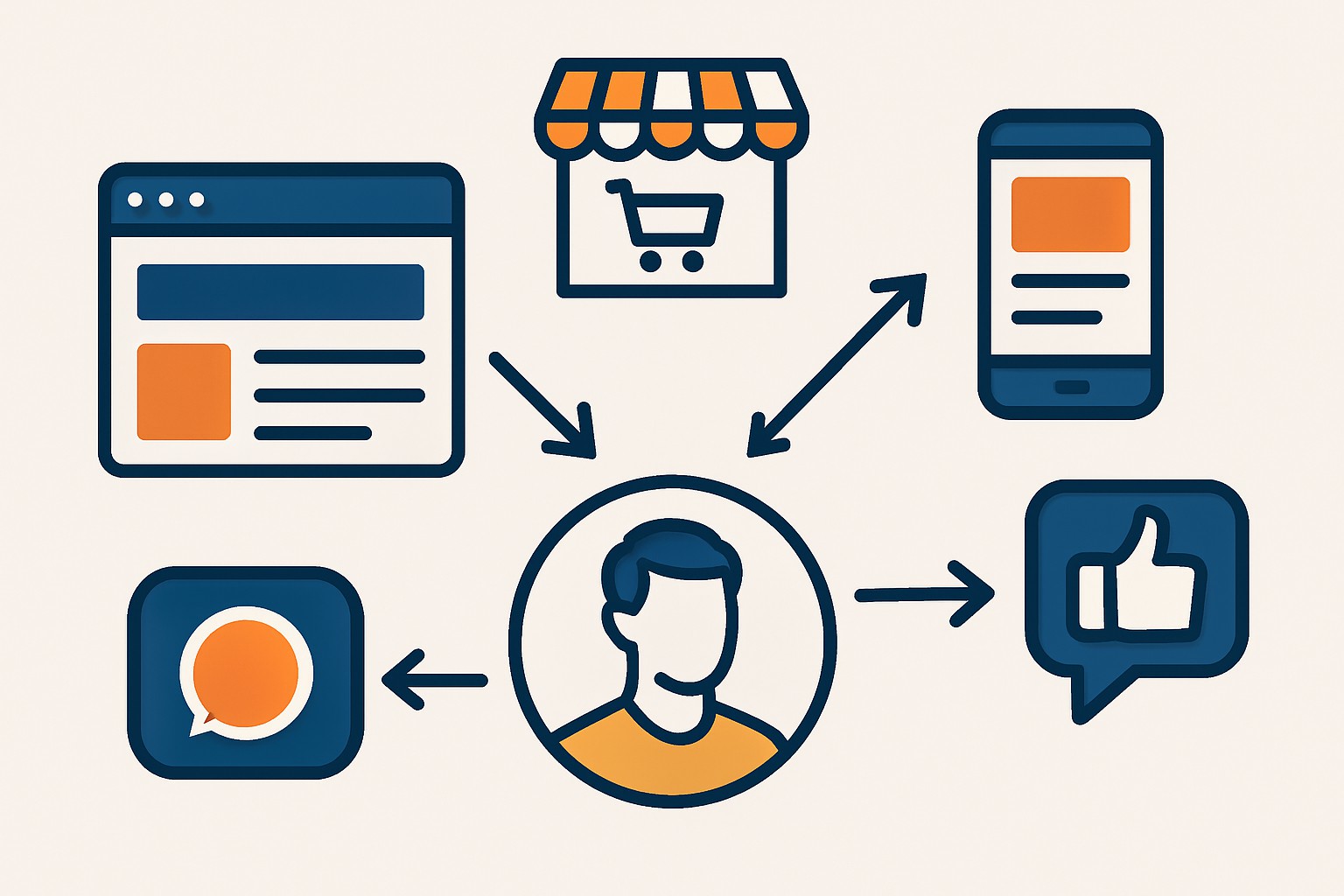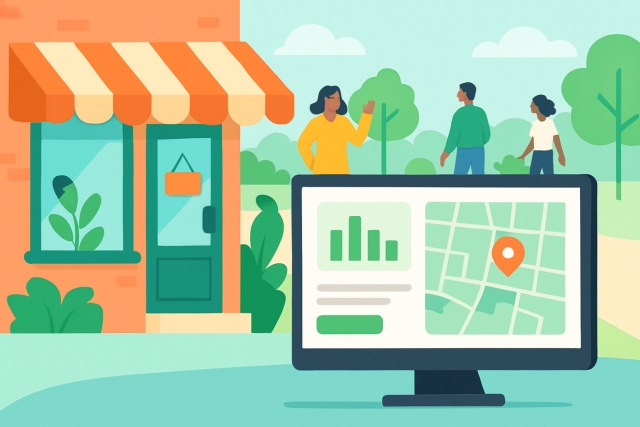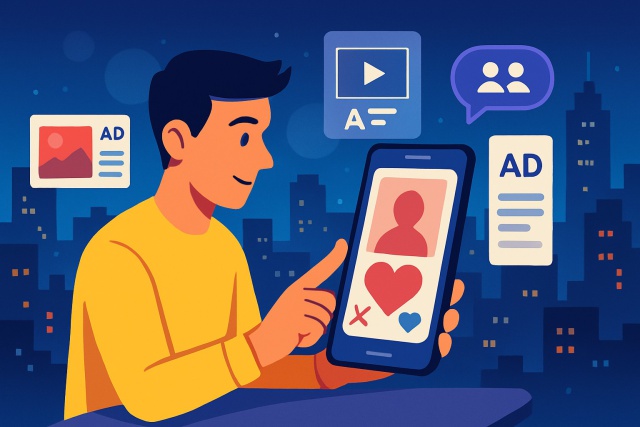Understanding Channel of Distribution in Digital Marketing


In today’s fast-changing digital marketing landscape getting a solid grip on the channel of distribution is absolutely important for businesses hoping to connect their products or services with customers in a meaningful way. While the term usually brings to mind the traditional route of goods moving from manufacturers to buyers it has picked up new layers in the online world. Many people just diving into this field tend to assume digital channels are only advertising platforms but the reality is richer. Distribution channels cover how products, information and payments flow through a variety of digital touchpoints.
What Exactly Does Channel of Distribution Mean Anyway?
A channel of distribution is the route that goods, services or information travel from the producer to the final customer. Traditionally this path has been paved by physical middlemen like wholesalers, retailers or agents who help get the product where it needs to go. Nowadays, digital marketing relies more on online platforms and tools that link producers directly with consumers and handle product access, communication and payments.
- Producers create or offer products and services as the first step in the distribution chain.
- Intermediaries like digital marketplaces, affiliates or platforms connect producers with potential buyers and play a key matchmaking role.
- Customers are the ones who buy and use these products and services.
- Throughout the process, products, information and payments flow between all parties, keeping transactions active with a steady stream of feedback.
Intermediaries in digital marketing have shifted quite a bit compared to old-school traditional channels. Nowadays many companies lean towards direct channels and sell through their own websites or apps to keep a tighter grip on the customer experience and data. Intermediaries like digital marketplaces such as Amazon or Etsy along with affiliates and social commerce platforms still play a vital role by helping businesses cast a wider net and create specialized customer journeys.
Common Channels of Distribution in Digital Marketing and How They Play Their Part
Digital marketing generally leans on two main channels for distribution: direct and indirect. Direct channels are where the brand takes the wheel, selling straight to customers and keeping full control in its hands. Indirect channels involve intermediaries who not only help with transactions but also broaden reach and bring a bit of extra know-how to the table.
Direct Channels are brand-owned spots like websites, mobile apps and social media pages where the company goes straight to the consumer without middlemen.
Indirect Channels include online marketplaces such as Amazon and eBay, affiliate marketing networks and digital retailers that connect brands to customers through established platforms.
Hybrid Channels balance the two. Many businesses use this mix to reach more customers while keeping some control. This makes distribution flexible and scalable in the long run.
| Channel Type | Characteristics | Advantages | Disadvantages | Examples |
|---|---|---|---|---|
| Direct | The brand takes the reins on the entire sales journey and holds the keys to customer data | Full-on control over the brand along with richer, more personal customer insights | Demands a fair bit of investment in tech tools and marketing muscle | Brand website, mobile apps |
| Indirect | Leverages third-party platforms to tap into customers | Swift access to a wider crowd without breaking the bank upfront | Less say in how customers experience the brand, plus those pesky platform fees | Amazon, affiliate networks |
| Hybrid | Combines the best (and challenges) of direct and indirect channels | Strikes a neat balance between control and reach while spreading the risk around | Calls for juggling multiple channels carefully, so things do not slip through the cracks | Fashion brands selling both on own site and marketplaces |
The Real Deal on How Channels of Distribution Actually Work
Channels of distribution play a vital role in guiding customers smoothly from the moment they discover a product through purchasing it and continuing their engagement afterward. Technology is the real MVP because it connects all digital touchpoints, monitors customer behavior closely and manages transactions seamlessly without missing a beat.
- Products or services show up on websites, marketplaces or social media all dressed up with clear descriptions and eye-catching images.
- Potential buyers stumble upon products through search, ads, social media or word of mouth whatever catches their attention.
- Secure payment options make checking out a breeze so customers don’t have to sweat it.
- Physical items get shipped to your doorstep while digital goodies arrive instantly with no waiting.
- Brands stick around to gather reviews, offer support and gently nudge for repeat purchases via emails or app notifications.
Imagine an e-commerce clothing brand that performs on two stages: its own website and popular third-party marketplaces like Amazon. On its own turf, it can roll out the red carpet with tailored offers, gather detailed customer insights and handle payments directly without a middleman. Meanwhile, being in the marketplace opens the chance to reach broader audiences and ride the wave of trust those big platforms have built.

Visual representation of digital channels of distribution illustrating the flow from producer to customer through direct and indirect digital platforms.
Key Benefits of Efficient Channel Distribution in Digital Marketing
Getting your channel distribution right in digital marketing isn’t just a nice-to-have—it's the backbone of success. When done efficiently, it can seriously amp up your reach, boost engagement, and keep your customer base coming back for more. Plus, it helps slice through the noise, making sure the right message lands in front of the right people at just the right time. In my experience, nailing this part of your strategy can be a real game changer, turning potential hiccups into smooth sailing.
Effective channel distribution in digital marketing plays a key role in helping brands reach wider audiences and deliver smooth shopping experiences. It also helps keep a sharp eye on sales tracking and grow at a healthy pace.
"> A well-crafted digital distribution channel acts as a important bridge, linking brands to diverse customer groups across multiple platforms. It not only helps deliver value in a seamless way but also keeps the whole experience feeling consistent—something that, in my experience, makes all the difference. — Industry Expert"
Typical Challenges You’ll Run Into with Digital Distribution Channels
While digital distribution channels definitely bring some clear advantages, they also have their fair share of headaches. Think of juggling conflicts between direct and indirect channels, the ongoing struggle to keep brand messaging on point, managing various intermediaries, and navigating the tricky maze of technology integration.
- Channel conflicts tend to pop up when direct sales elbow in on listings across various marketplaces.
- When intermediaries are not quite on the same page, customers can end up with patchy experiences that might leave a dent in the brand’s reputation.
- Tracking and analytics can sometimes drop the ball, making it tricky to get a crystal-clear view of how things are really performing.
- Juggling logistics and inventory usually becomes a bit of a headache as multi-channel distribution kicks in.
- Cybersecurity risks naturally ramp up when you’ve got multiple systems and a bunch of data streams all mingling together.
Businesses usually dive into strategic channel planning and pour resources into integrated technology solutions. They also make sure everyone along the chain is kept in the loop with clear communication.
Best Ways to Give Your Digital Distribution Channels a Serious Boost
Optimizing digital distribution channels requires a thoughtful approach to picking the right ones and ensuring they play nicely together. It also means keeping a close eye on how customers interact with them over time.
Take the time to really get to know your target audience’s preferences—figure out where they like to hang out online and where they enjoy shopping. It’s like knowing your friends’ favorite coffee spots before inviting them out.
Choose the right blend of direct and indirect channels to cast your net wide but still keep a firm hand on the wheel. It’s all about balance.
Make sure all your channels play nicely together, delivering a smooth and consistent experience from first discovery through delivery. Think of it as a well-choreographed dance rather than a jumbled mess.
Lean on data analytics tools like Moz Pro or Mangools to keep an eagle eye on how your channels perform. Then tweak your strategies based on the real numbers, not just gut feelings.
Keep the lines of communication wide open and clear with any intermediaries involved. That way, coordinating everything from promotions to inventory and customer service flows without a hitch.
Keeping a close watch and staying flexible truly makes all the difference. Digital markets can change at the drop of a hat, thanks to ever-evolving technology and shifting consumer habits that never seem to sit still. Keeping an eye on performance metrics and being ready to tweak channel strategies helps brands not just keep up, but actually stay ahead of the curve. Tools like Moz Pro’s site audits and keyword research often shine a light on new opportunities and help iron out any bumps in the road without wasting time.
Emerging Trends in Digital Marketing Distribution Channels That Are Shaping the Landscape
Digital distribution channels are poised to be shaped by AI-driven personalization and smoother omnichannel integration. Voice commerce and an increasing shift toward direct-to-consumer models help brands genuinely connect with customers across multiple touchpoints.
- AI and machine learning sharpen how customers are targeted and help automate optimization across channels.
- Smooth omnichannel experiences weave online and offline touchpoints together naturally and effortlessly.
- Social commerce keeps growing by blending shopping into social media platforms so seamlessly you might forget where browsing ends and buying begins.
- Blockchain technology adds transparency to transactions and builds trust where it counts.
- Interactive content like livestream shopping provides a direct and lively way to connect with customers, making engagement feel more human.
These trends often blur the once-clear lines of traditional channel of distribution, nudging marketers to become not just flexible but downright adept with technology.
Further Reading
Unlock Digital Marketing Success with Moz
Struggling to optimize your online presence? Moz is the ultimate Internet Marketing solution, empowering businesses with powerful SEO tools, insightful analytics, and expert guidance. Elevate your digital strategies and outshine the competition.
- Boost organic traffic with data-driven SEO tactics
- Enhance content marketing with expert recommendations
- Gain a competitive edge with comprehensive link analysis








